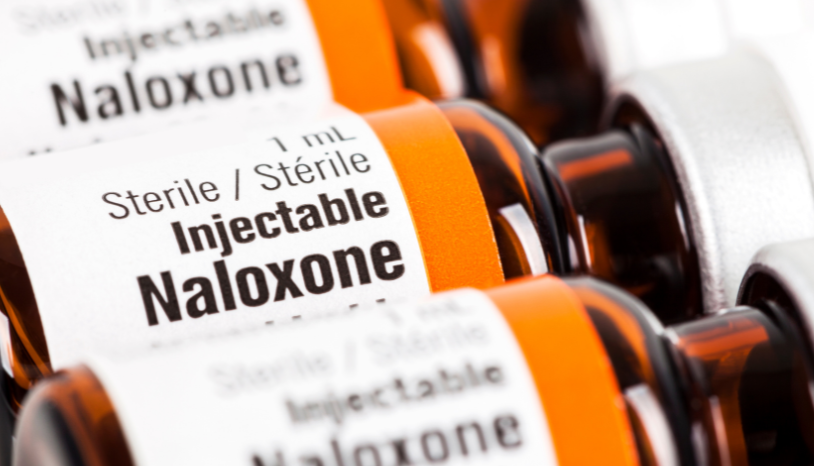Opioids are potent pain-relieving drugs prescribed for conditions ranging from post-surgical pain to chronic illnesses. While they can be highly effective when used short-term and as directed, they also have a strong potential for misuse, dependence, and addiction. Developing an awareness of how long opioids stay in the body is helpful for those taking them under medical supervision and anyone concerned about withdrawal or drug testing.
Several variables influence how long opioids remain detectable in the system, including the type of opioid, dosage, frequency of use, and individual metabolism. Drug tests, whether urine, blood, saliva, or hair tests, can detect opioids for different lengths of time. Learn about these detection windows and make more informed choices about your health and well-being.
Factors That Affect How Long Opioids Stay in Your System
The amount of time opioids remain in the body depends on several factors, including the specific drug used, how often it is taken, and the individual’s overall health. While general detection windows exist, these variables can cause significant variations from person to person.
Type of opioid
Short-acting opioids tend to leave the body more rapidly than long-acting opioids. Drugs like oxycodone, hydrocodone, and codeine typically clear the system within a few days, while long-acting alternatives like methadone, fentanyl patches, and buprenorphine can take a week or more to leave the body altogether. The formulation of the drug also plays a role. Extended-release opioids stay in the system longer than immediate-release forms of the drug.
Dosage and frequency of use
The more frequently someone takes opioids, the longer the body takes to eliminate them. A single low dose may clear within a day or two, while repeated use can cause the drug to accumulate in body tissues. Chronic opioid use is associated with longer detection times, as traces of the drug remain stored in fat cells and slowly release into the bloodstream.
Metabolism and overall health
Each person’s metabolism affects how quickly their body processes opioids. A faster metabolism breaks down drugs more efficiently, shortening detection windows, while a slower metabolism extends the time opioids remain in the system. Liver and kidney function also play a part as these organs break down and release opioids. People with liver or kidney disease may process opioids more slowly, increasing detection times.
Hydration, diet, and body composition
The body eliminates opioids through urine, sweat, and other bodily fluids, so hydration levels can impact how quickly the drug clears the system. Staying hydrated helps flush opioids out more briskly. Diet can also impact elimination times. Nutrient-dense foods support liver function, which streamlines drug metabolism. Beyond this, opioids are fat-soluble, meaning that those with higher body fat percentages may store traces of the drug for longer, leading to extended detection times.
Detection Windows for Different Opioids
Different opioids remain in the body for varying lengths of time, depending on their type.
Short-acting opioids
Common examples of short-acting drugs in this class include:
- Codeine: This painkiller is detectable for 1 to 2 days.
- Oxycodone: OxyContin, Percocet, and other medications containing oxycodone are detectable for 1 to 3 days.
- Hydrocodone: Vicodin, Norco, and other hydrocodone products are detectable for 2 to 4 days.
- Heroin: This illicit semi-synthetic opioid is detectable for 2 to 4 days.
Long-acting opioids
Long-acting drugs in this class include:
- Methadone: Used to inhibit opioid use, methadone is detectable for up to 14 days.
- Fentanyl: Actiq lozenges, Duragesic patches, and other forms of fentanyl are detectable for 1 to 3 days.
- Buprenorphine: Suboxone and Subutex are detectable for up to 7 days.
Opioid Detection in Different Drug Tests
The type of drug test used determines how long opioids can be detected. Some tests have shorter detection windows, while others can identify opioid use months after the last use.
Urine tests (most common)
Urine tests are widely used in workplaces, rehab programs, and legal settings. Most opioids can be detected in urine for between 1 and 7 days, depending on the drug. Heroin, oxycodone, and hydrocodone usually leave the system within 2 to 4 days. Methadone and buprenorphine can remain detectable in urine for 7 to 14 days.
Blood tests (short detection window)
Blood tests provide a short window of detection, typically a few hours to one day. These tests are often used in medical emergencies or accidents to determine recent opioid use.
Saliva tests (quick results, limited timeframe)
Saliva tests detect opioid use within 5 to 48 hours, depending on the drug. These tests are commonly used for roadside drug testing or workplace screenings.
Hair tests (longest detection period)
Hair tests can detect opioid use for up to 90 days. They are less common due to cost but may be used in legal cases or high-security employment screenings.

How to Eliminate Opioids from Your System Faster
Opioids leave the body naturally over time, but some methods may help accelerate elimination. That said, while staying hydrated, eating a balanced diet, and exercising can support the body’s detoxification process, trying to remove these drugs too quickly without medical supervision can trigger withdrawal symptoms that are tricky to manage alone.
Hydration and nutrition
Drinking plenty of water helps the kidneys flush opioids from the body more efficiently. Proper hydration can prevent dehydration, which may slow the detox process. A nutrient-rich diet also supports liver function. The liver is responsible for breaking down drugs like opioids. Foods laden with antioxidants—fruits and vegetables, for instance—can help the body process and eliminate toxins more effectively.
Exercise and metabolism
Physical activity can help speed up metabolism, allowing the body to break down opioids more quickly. Exercise also promotes sweating, which may help remove small traces of opioids through the skin. That said, for those undergoing withdrawal, strenuous exercise may not be practical, as withdrawal symptoms can cause fatigue, muscle pain, and dehydration. Light activities such as walking or stretching may be more manageable during the early stages of detox.
Medical detox and professional support
For those who have been using opioids regularly, professional medical detox is the safest and most effective way to eliminate the drug from the system. Under medical supervision, individuals can receive FDA-approved medications that ease withdrawal symptoms and reduce discomfort. Medical detox also ensures that complications like dehydration or severe withdrawal symptoms are properly managed.
Dangers of rapid detox
Some people may try extreme methods, such as rapid detox programs or home remedies, to clear opioids from their system quickly. These approaches can be dangerous, provoking severe withdrawal symptoms, dehydration, and medical emergencies. Quitting opioids suddenly, known as cold turkey, increases the risk of relapse and overdose if someone resumes use. A gradual, medically supervised detox is the safest and most effective approach to eliminating opioids while minimizing withdrawal symptoms.
While the body will process opioids naturally over time, supporting overall health through hydration, nutrition, and medical care can streamline detox. For those battling opioid dependence, seeking professional treatment offers the best chance at a safe and lasting recovery.
Get Treatment for Opioid Addiction at a Premier Rehab
Although opioids can stay in the body for days or even weeks, their impact on a person’s life can last much longer. These drugs might be effective for pain management, but they also carry a high risk of dependence and addiction. If opioid use has started to interfere with your health, relationships, or daily life, seeking help can be the first step toward sustained recovery.
Safe and effective treatment is available and might involve medical detox, inpatient care, or ongoing outpatient treatment. Professional rehab centers provide the resources needed to help you manage withdrawal, address underlying issues, and set the stage for enduring sobriety.
At The Retreat, we offer comprehensive opioid addiction treatment in a supportive and healing setting. Our team blends evidence-based care with holistic interventions to help people recalibrate their lives.
If you or someone you love is battling opioid abuse, don’t wait to get help. Opioid addiction is a progressive condition that typically gets worse unless treated. Contact admissions to learn more about our various treatment options and kickstart your recovery right away.






